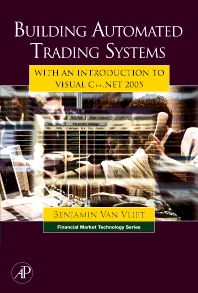Books in Data collection and data estimation methodology computer programs
Books in Data collection and data estimation methodology computer programs

Actuarial Principles
- 1st Edition
- Andrew Leung
- English

Price Level Measurement
- 1st Edition
- Volume 196
- W.E. Diewert
- English

Next Generation Datacenters in Financial Services
- 1st Edition
- Tony Bishop
- English

Computational Finance Using C and C#
- 1st Edition
- George Levy
- English

Building Automated Trading Systems
- 1st Edition
- Benjamin Van Vliet
- English

An Introduction to High-Frequency Finance
- 1st Edition
- Ramazan Gençay + 4 more
- English

Data Reconciliation and Gross Error Detection
- 1st Edition
- Shankar Narasimhan + 1 more
- English

Notes and Problems in Applied General Equilibrium Economics
- 1st Edition
- Volume 32
- K.R. Pearson + 4 more
- English